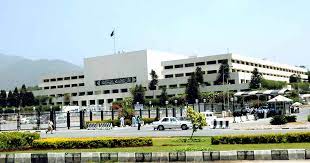
In recent years, Pakistan has undergone a significant transformation in its approach to international relations. The country has shifted its focus from a traditional geopolitical outlook to a more dynamic and forward-thinking geoeconomic perspective. This strategic move holds profound implications for Pakistan’s development, regional cooperation, and global engagement. In this article, we will delve into the reasons behind Pakistan’s shift and explore the essence of this geoeconomic perspective.
- Embracing Economic Diplomacy: Boosting Trade and Investment
Pakistan’s decision to adopt a geoeconomic perspective stems from a realization that economic strength plays a pivotal role in shaping its global standing. By prioritizing economic diplomacy, Pakistan aims to enhance its trade ties, attract foreign direct investment (FDI), and capitalize on its geostrategic location as a gateway to regional markets. The country seeks to leverage its unique position between South Asia, the Middle East, and Central Asia to foster connectivity, trade, and economic cooperation.
- Regional Integration: The Power of Connectivity
One of the key elements of Pakistan’s geoeconomic strategy is a focus on regional integration. By fostering connectivity through infrastructure development and energy cooperation, Pakistan seeks to become a linchpin in the region’s economic activities. The China-Pakistan Economic Corridor (CPEC), a flagship project under the Belt and Road Initiative (BRI), exemplifies Pakistan’s commitment to regional connectivity and economic collaboration. This transformative endeavor aims to create an extensive network of roads, railways, and energy projects, enhancing regional trade and promoting economic prosperity.
- Diversifying Trade Partnerships: Looking Beyond Conventional Allies
Pakistan’s geoeconomic perspective encourages diversification of its trade partnerships. While maintaining traditional alliances, the country recognizes the importance of expanding its economic horizons. By engaging with emerging economies and forging stronger ties with countries in Southeast Asia, Africa, and Latin America, Pakistan aims to tap into new markets, diversify its export base, and reduce reliance on a few trading partners. This strategic approach not only strengthens economic resilience but also fosters a more balanced and inclusive global engagement.
- Attracting Foreign Investment: Creating a Business-Friendly Environment
To realize its geoeconomic aspirations, Pakistan acknowledges the significance of creating a business-friendly environment that attracts foreign investment. The government has embarked on a comprehensive reform agenda, including simplifying regulations, improving ease of doing business, and ensuring investor protection. These measures, coupled with incentives and special economic zones, aim to enhance Pakistan’s competitiveness and allure for international investors, fostering economic growth and job creation.
- Leveraging Technology and Innovation: A Catalyst for Economic Transformation
In the era of rapid technological advancements, Pakistan recognizes the pivotal role of innovation and technology in driving economic growth. The country has embraced initiatives to nurture a thriving startup ecosystem, promote research and development, and invest in digital infrastructure. By leveraging technology, Pakistan aims to unlock new economic opportunities, enhance productivity, and achieve sustainable development in various sectors, including agriculture, manufacturing, and services.
Conclusion:
Pakistan’s shift from a geopolitical to a geoeconomics perspective marks a strategic recalibration of its foreign policy and national priorities. By placing economic development at the forefront, Pakistan aims to unlock its vast potential, foster regional integration, attract foreign investment, and diversify its trade partnerships. This geoeconomics approach not only strengthens Pakistan’s position in the global arena but also contributes to regional stability and prosperity. As the country continues on this transformative path, it seeks to create an enabling environment that fosters innovation, connectivity, and sustainable economic growth.